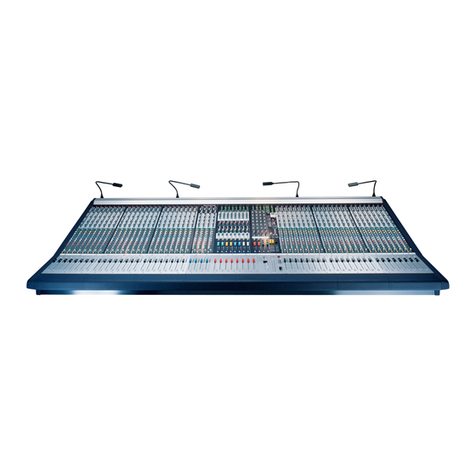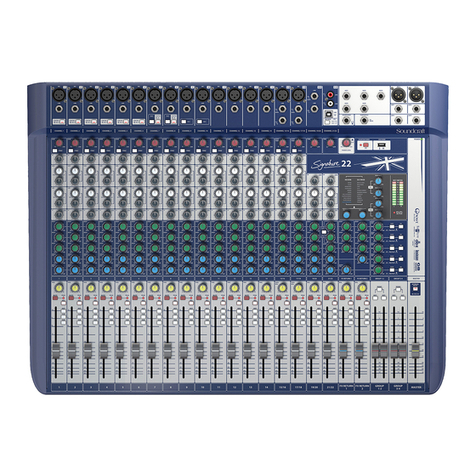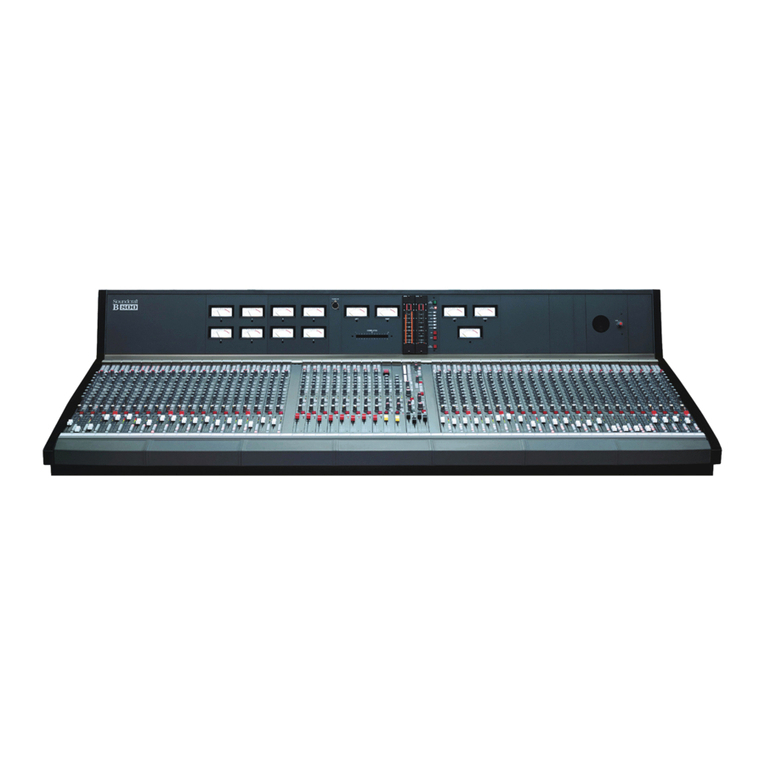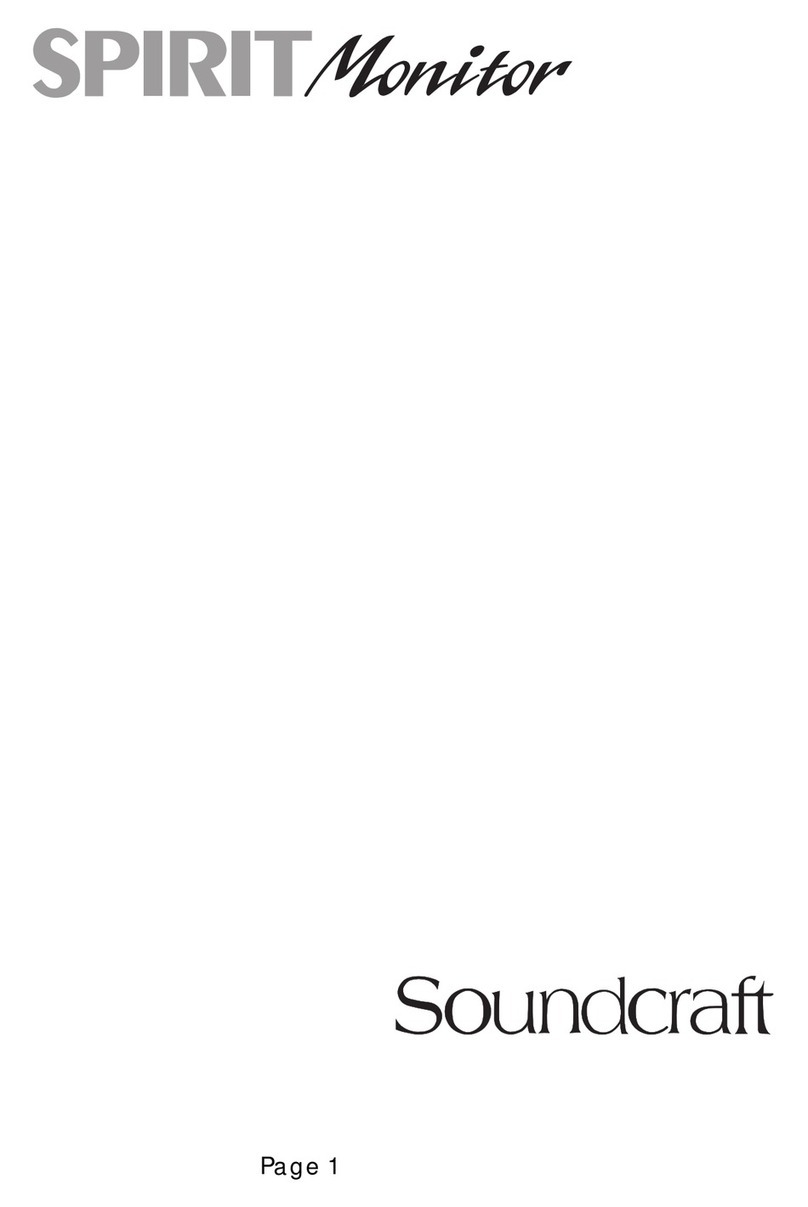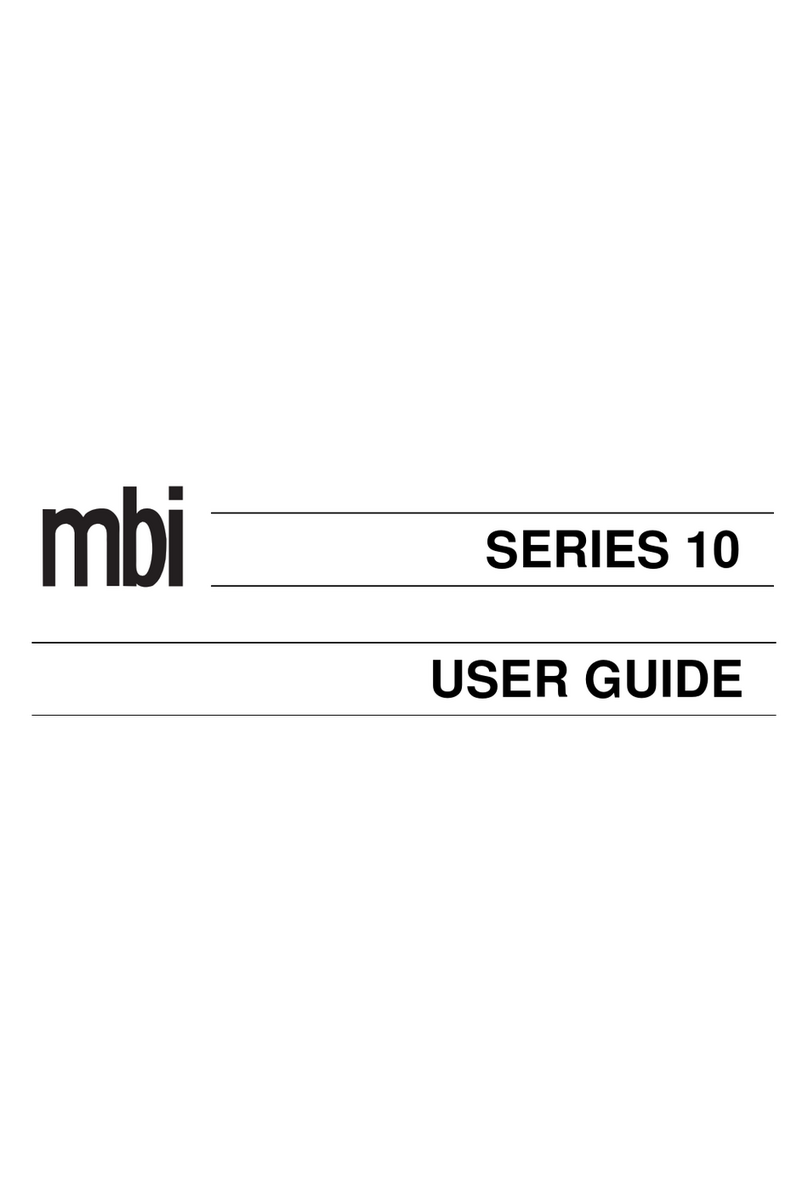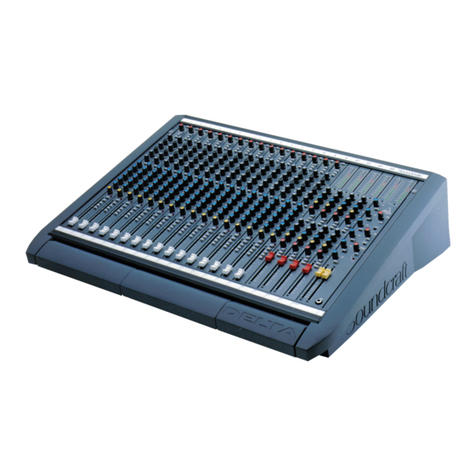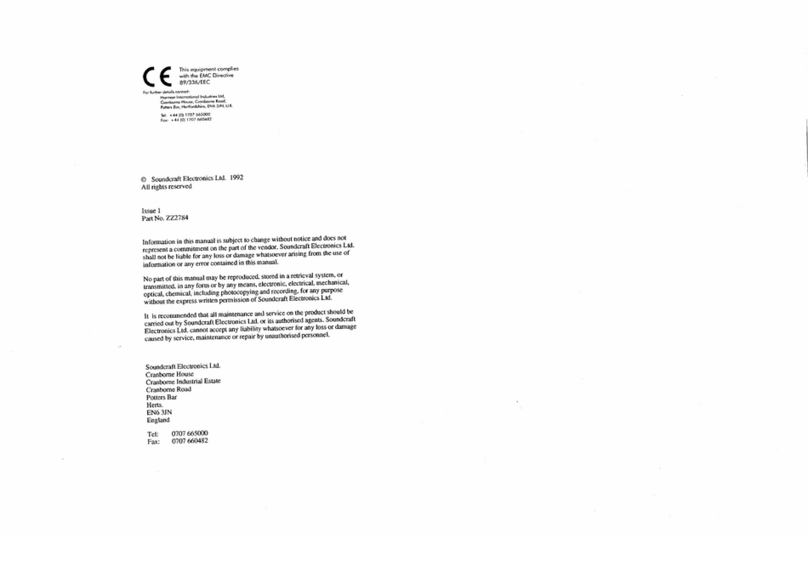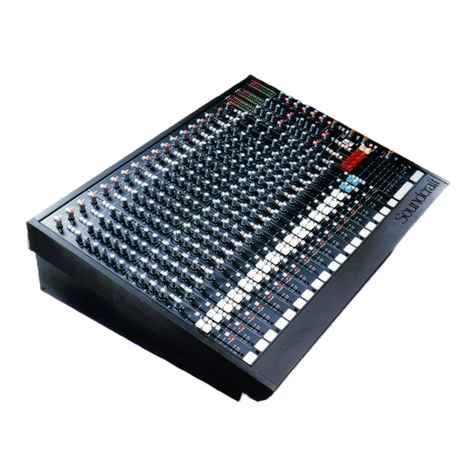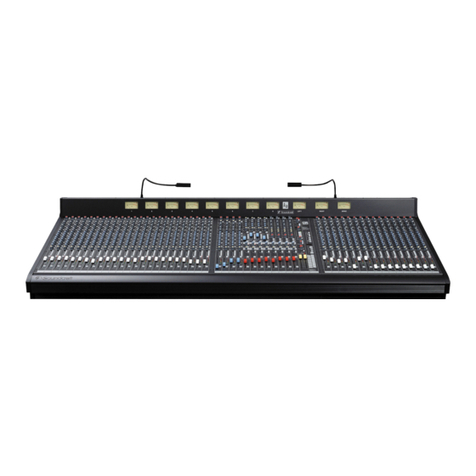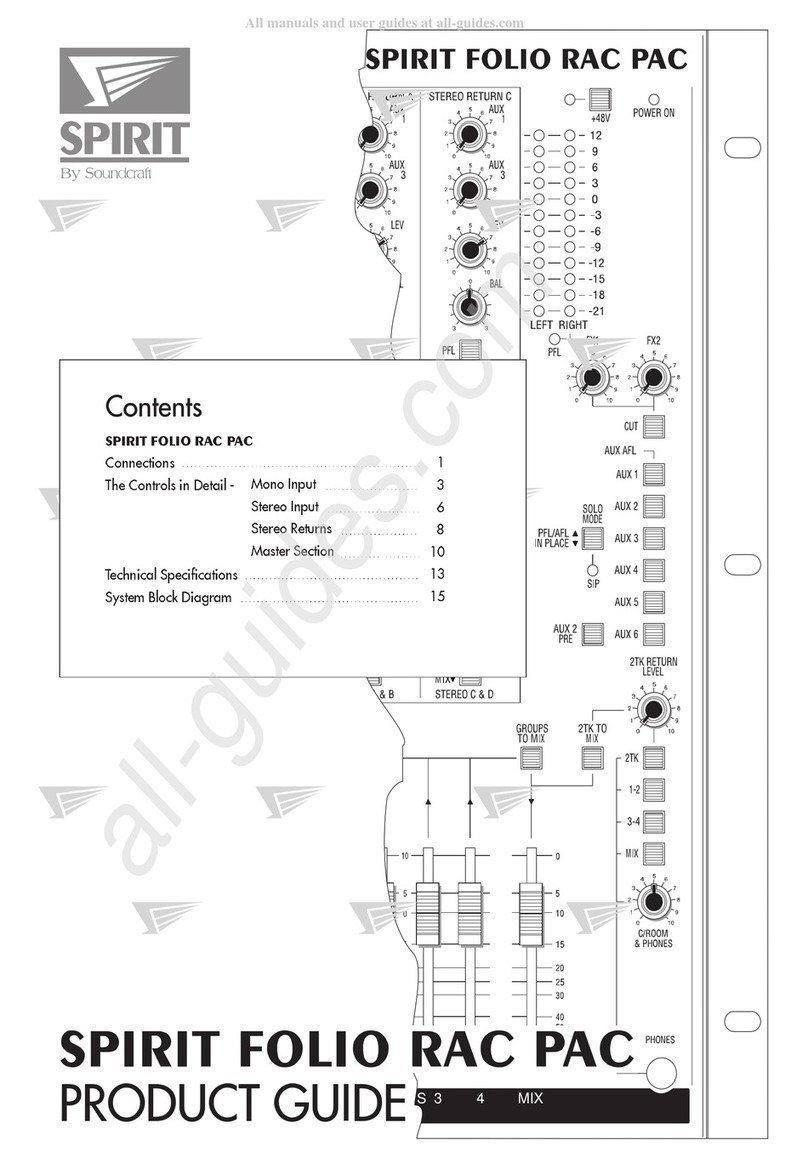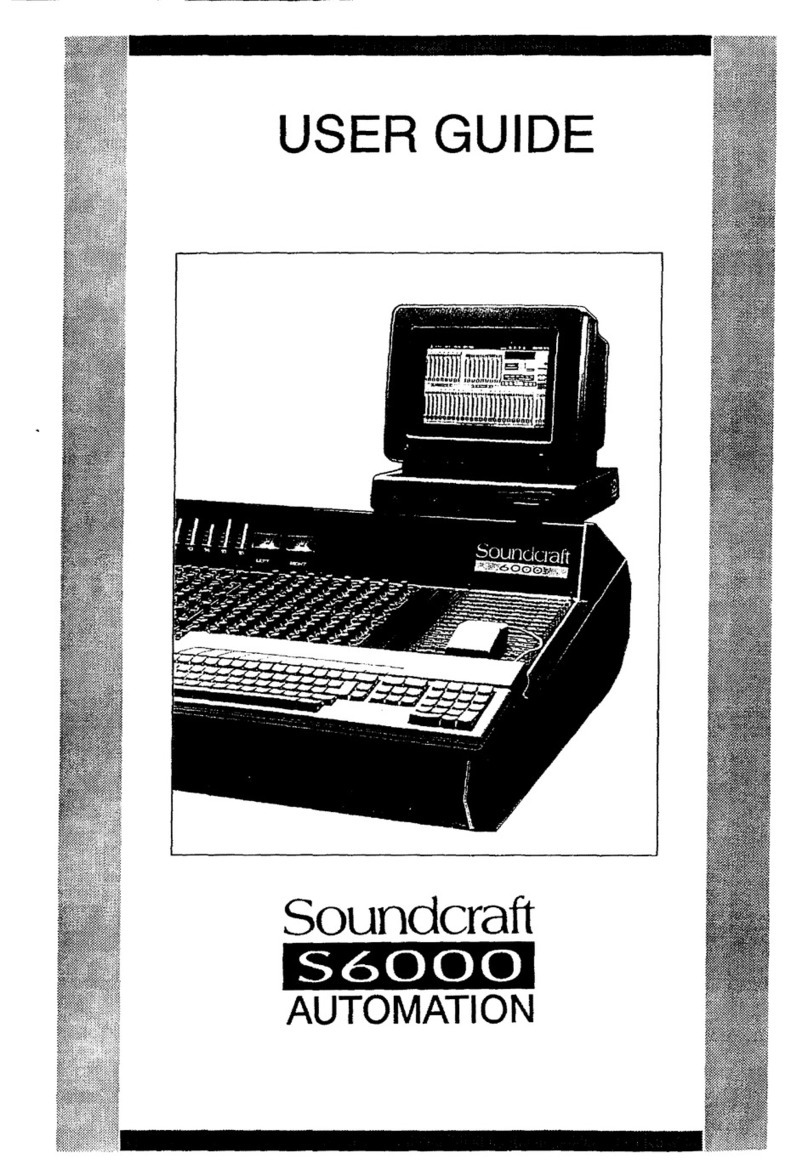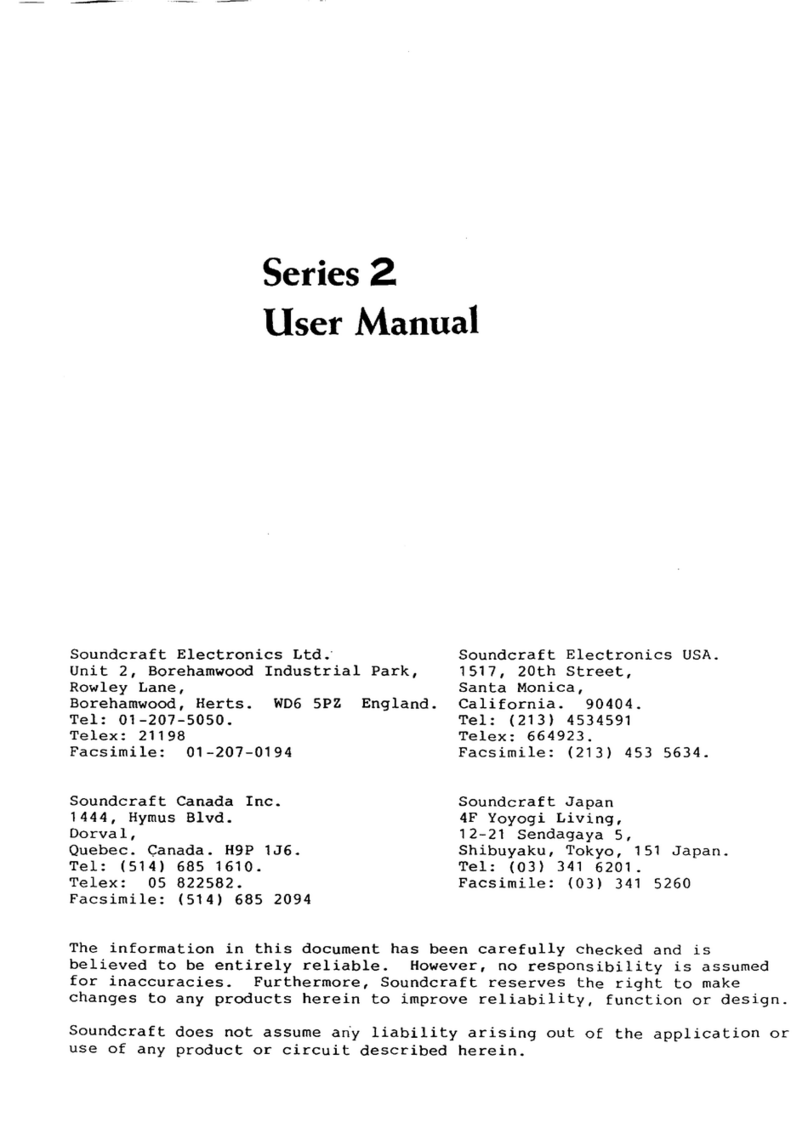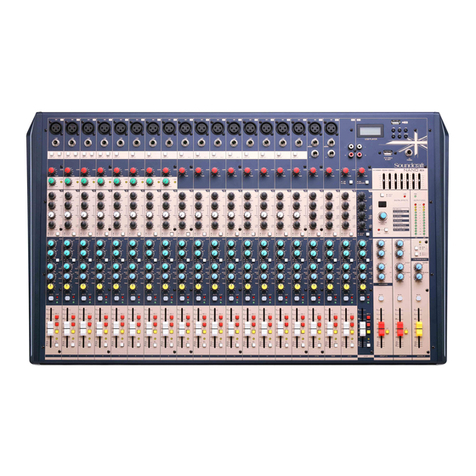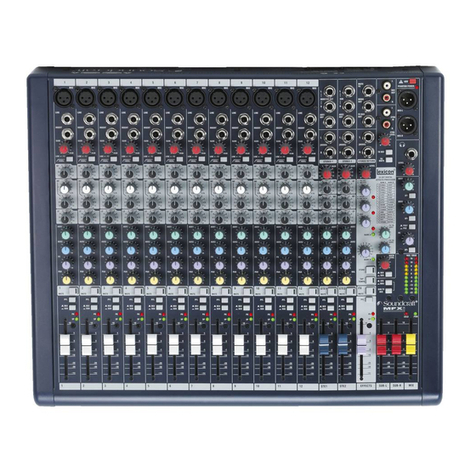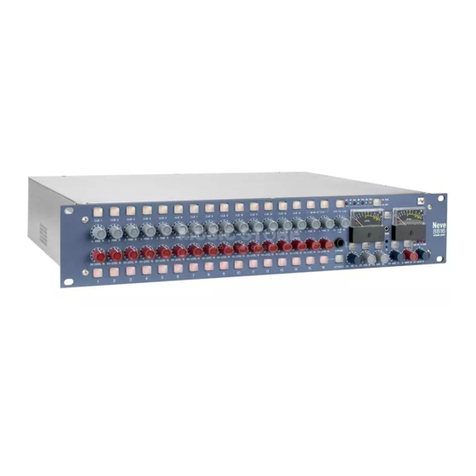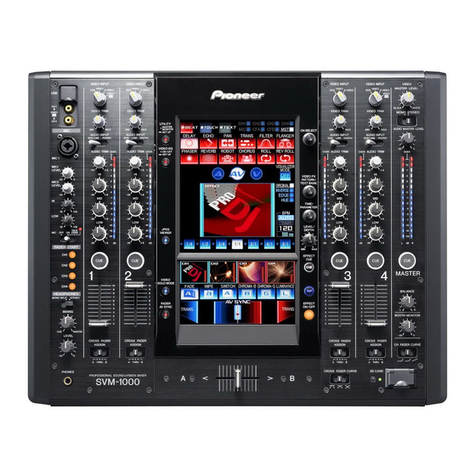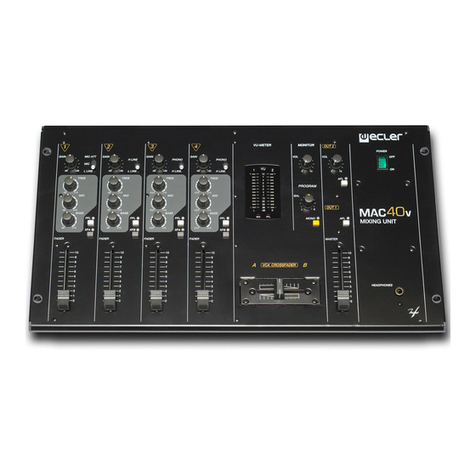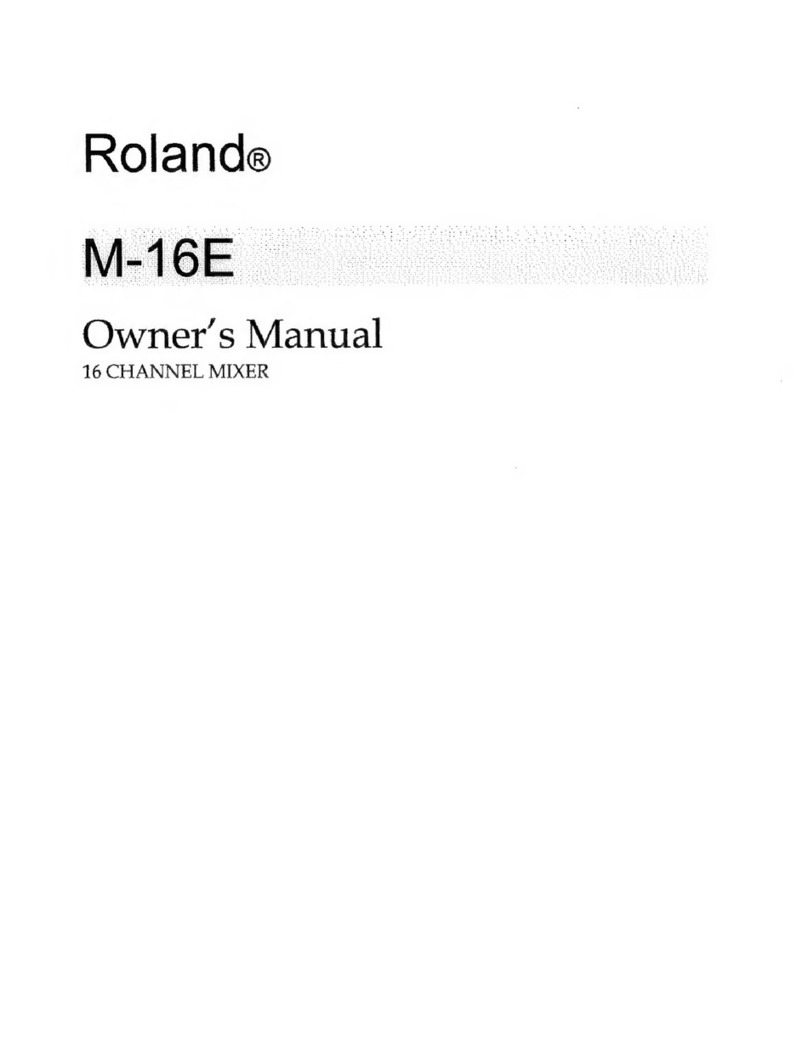Page 2
BASIC PRINCIPLES OF PA MIXING
There was a time when the P.A. system and the operator existed only to increase the
overall volume of the performers, so that they could be heard in a large room or
above high ambient noise levels. This just isnt true any more. The sound system and the
sound engineer have become an integral part of the performance, and the artists are
heavily dependent on the operators skill and the quality of the equipment.
The following introduction to the basics of mixing are included for the benefit of
those users who may not have any significant familiarity with sound equipment, and who
are baffled by the endless jargon used by engineers and artists alike.
The Mixer
As one would expect, the main purpose of the mixer is to combine sounds, but under
precise control. This is why long-throw faders are essential on any professional mixer, to
give a responsive and smooth feel to the operator. The faders provide you with clear
and instinctive control of the final sound balance and like an artist playing an instrument
you should listen to the effect of your fader movements, not look at your hands.
Your SPIRIT LIVE 42mixer accepts a wide range of input signals via the UltraMic+
microphone input, for very low level signals, or a line input, for higher level signals from,
for instance, tape machines, effects processors, etc.
The mixer is split into two sections. The Inputs receive, match and process individ-
ual source signals, and distribute them at precise mix levels to either a stereo Mix output
or to one of the Groups. The Master section allows overall level control of all outputs,
and provides monitoring of the audio signal at many points in the mixer, either on head-
phones or meters.
The Equaliser controls are the most flexible and potentially destructive feature of
the mixer. They have a similar effect on the frequency response of the input channel as
the tone controls on a hi-fi system, but with much greater precision, and allow particular
characteristics of the input signal to be emphasised or reduced. It is very important that
you become familiar with the effect each control has on the sound and this is best
achieved by spending time listening to the effect of each control on a well-known track
played through the mixer.
The Auxiliary Sends provide a way of routing the input signals to a number of sec-
ondary outputs, for artists foldback, echo units or additional speaker outputs.
The Pan control adjusts the position of the input signal within the stereo mix, and
can be swept from full left, through to full right. This allows particular artists to retain
their correct spatial position within the mix, and can be valuable for live effects.
Pre-Fade-Listen(PFL) allows you to monitor the signal at many points in the mixer.
Pressing any PFL switch places the signal at that particular point onto the headphones
and the right meter, to check the quality of the signal or to pin-point problems. Using
PFL will not affect the signals on the outputs from the desk.
Each mono input channel and the Mix and Group outputs have an Insert `A gauge
jack socket, which is a break point in the signal path. It allows the signal to be taken out
of the mixer, through an external piece of equipment and then back into the mixer
directly after its original exit point. The Insert point is normally bypassed by the `A
gauge jack socket contacts, and is only brought into operation when a plug is inserted.
Typical uses would include Effects Processors, Limiters, additional Equalisers or Delay
units. In addition, each channel has a Direct output which may also be used to feed
external equipment such as multitrack tape machines or effects devices.
